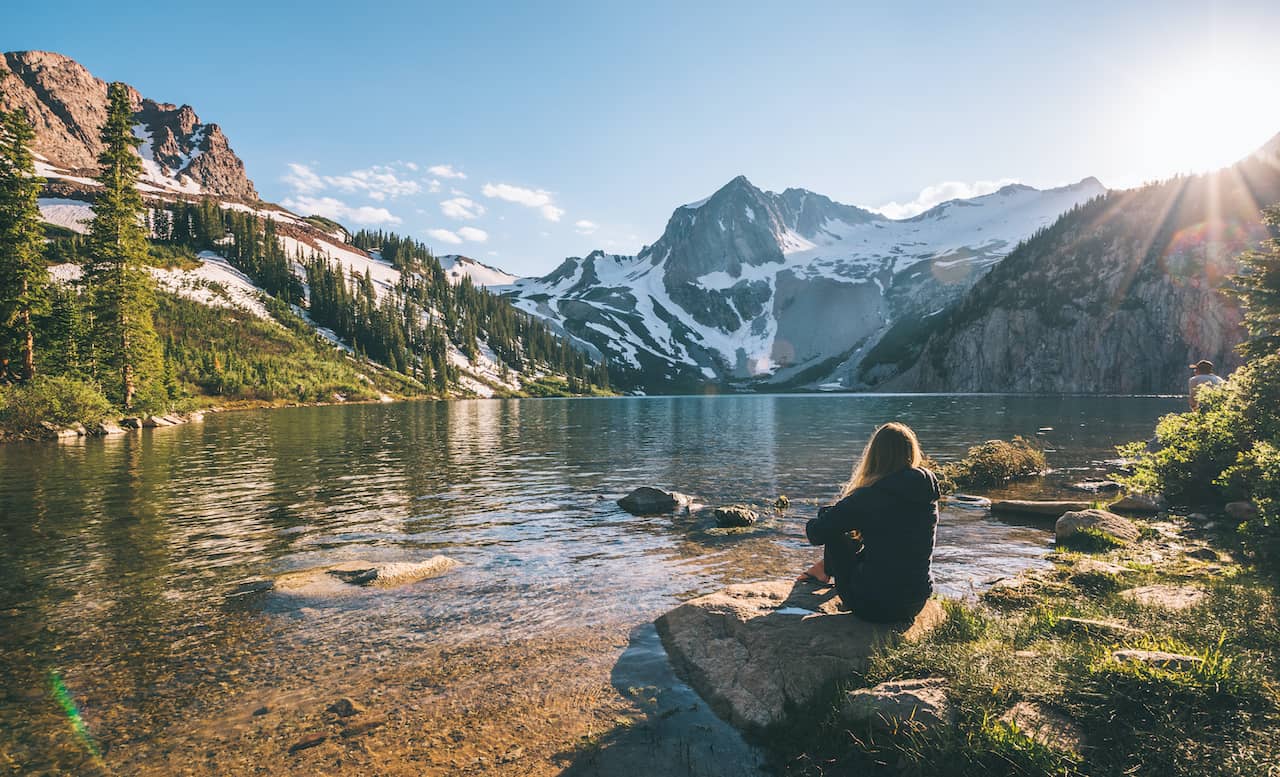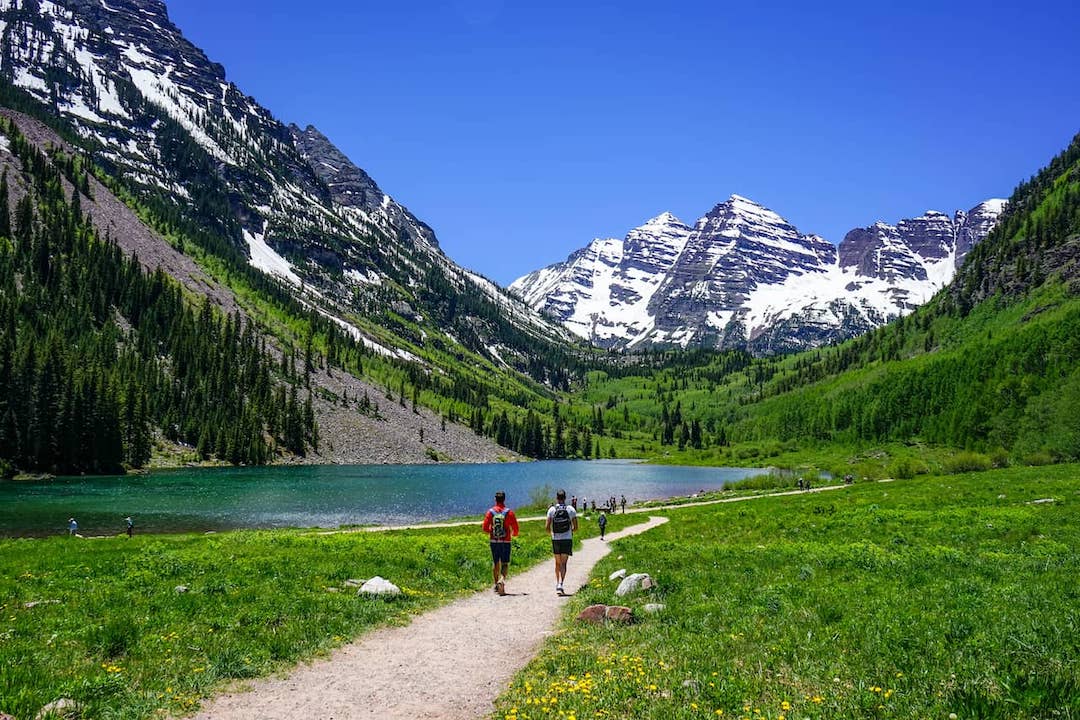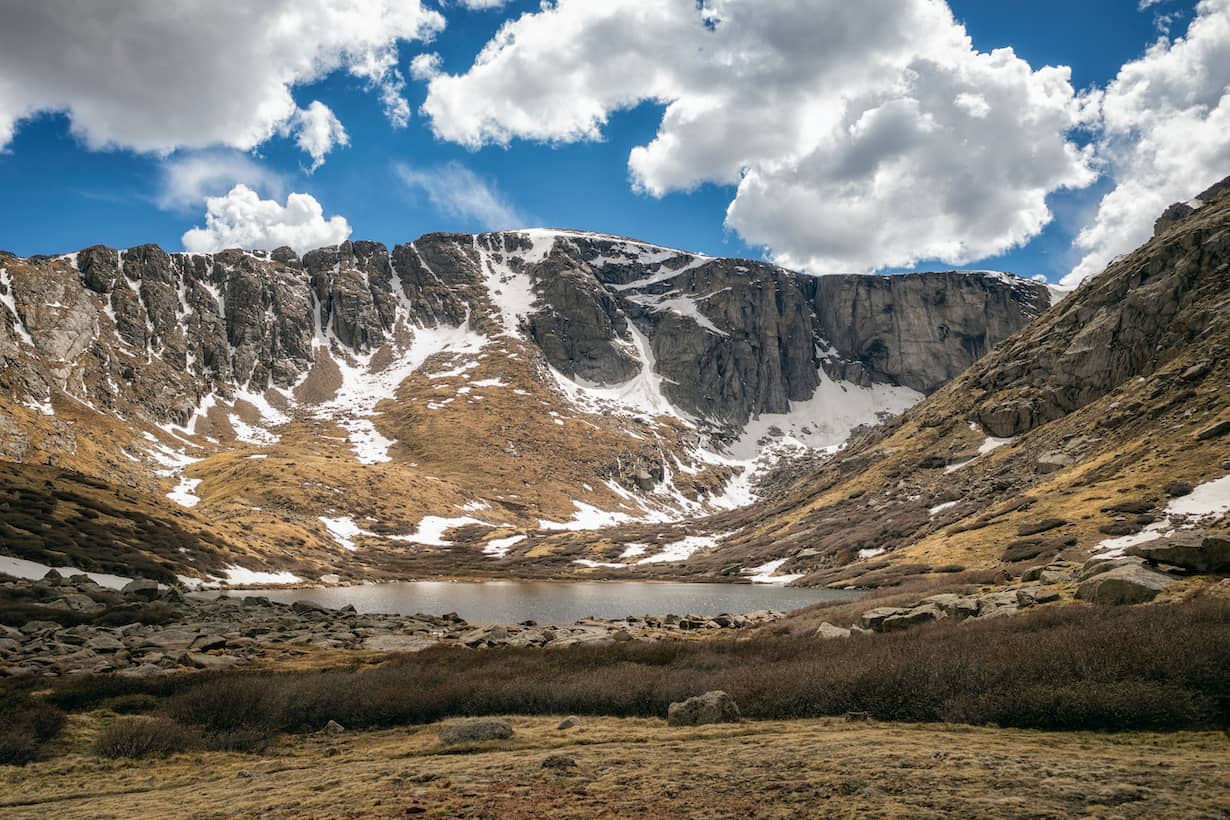
The term “backpacking” immediately conjures up visions of difficult terrain and multi-day treks. But whoever said those were requirements?
There’s actually a lot to be said for more manageable, bite-sized backpacking adventures, like weekend or even overnight trips. Between balancing a career, family, and social obligations, many of us simply (and sadly!) don’t have extended periods of time to go off-grid on the trail. I certainly fall into that category, but that doesn’t mean I don’t have any time for adventuring.
Recently, I tried a new-to-me type of adventure: I rented a Cruise America RV for a few days and tackled a few shorter, overnight backpacking trails. This allowed me to enjoy both the freedom of camping outdoors and the luxury and comfort of RV camping — truly the best of both worlds.
My Personal Backpacking Goal
It’s no secret that Colorado is a hikers’ and backpackers’ paradise. Between the spectacularly beautiful scenery, seemingly perpetual sunshine, and challenging, varied terrain (did you know Colorado has 58 fourteeners?!), Colorado is the holy grail of backpacking.
I’ve always really enjoyed backpacking and I’ve also always been drawn to Colorado. Who could blame me? — Mother Nature is at her finest there. So, Colorado was a no-brainer for my solo backpacking destination. Just me, my hiking pack, and my rental RV.
Colorado or Bust

Colorado is truly one of the best places on Earth to hike and backpack. Honestly, though, the sheer number of trails is a bit overwhelming. I had trouble deciding where to start, so I picked three shorter backpacking routes to tackle as separate overnight trips. Bonus: this strategy took me on a mini Colorado road trip and allowed me to see lots of different scenery!
Devil’s Thumb to King Lake
I wanted to ease into backpacking in Colorado, so starting with this loop was an easy decision. Not only is the total distance a manageable 16.5 miles, but the hike is in Nederland, just over an hour from Denver.
The initial five-mile ascent to Devil’s Thumb Lake is the most difficult stretch, gaining 2,000 feet. I found a great campsite right near the lake, then tackled the remaining 11-ish miles the following morning. The wildflowers and views of the Indian Peaks Wilderness are incredible in the summer, so take your time to — literally — stop and smell the flowers.
I parked my Cruise America RV at the Hessie Trailhead, but there are a couple of things to note. This trailhead also provides access to the extremely popular Lost Lake, so it fills up quickly, especially on weekends. Try to hike on a weekday as I did, or alternatively, take the free Boulder County Hessie Shuttle.
Four Pass Loop
The Maroon Bells-Snowmass Wilderness area is home to some of Colorado’s most iconic scenery, so backpacking here was high on my list. Formally known as Four Pass Loop - West Maroon to Buckskin, this route covers 27 miles and spans four peaks — each over 12,000 feet.
From Maroon Lake, you can hike either direction since the trail is a loop. After extensive research, I chose to go counter-clockwise. This allows you to hike down the steepest, most treacherous stretch of the route (Buckskin Pass), as opposed to hiking up. I’m all about working smarter, not harder. I hiked about 14 miles before pitching my tent at a scenic spot overlooking one of several lakes, then did the remaining 13 miles the next day.
There are a few important notes I have about backpacking Four Pass Loop. You must stop at the ranger station to register and get a wilderness permit on your way in. It doesn’t cost anything; it’s for safety purposes. You’re also required to have a bear canister for food and toiletries, and you will be asked to show it.
Colorado Trail
I rounded out my Colorado backpacking experience on one of the most coveted trails of all — the Colorado Trail. Well, a section of it anyway — the entire CT is 485 miles long, so a bit ambitious for an overnight trip. Fortunately, the trail is divided into 28 segments, each with its own access point.
Since the CT runs from Denver to Durango, each segment is dramatically different. I absolutely love the rugged San Juans in southwestern Colorado, so I opted for segment 22: Spring Creek Pass Trailhead to Carson Saddle. I chose this segment because it has the trail’s highest point at 13,271 feet. Segment 22 is also entirely above the treeline and spans about 17 miles.
Spring Creek Pass Trailhead is one of the more accessible points on the CT, which is another reason I chose it. However, Carson Saddle is not — 4-wheel-drive is required. Thankfully, the Colorado Trail Foundation maintains a list of “shuttlers,” people who voluntarily drive you to/from the trailheads. You need to plan in advance if you want to use a shuttler, but I highly recommend it. I hiked segment 22, spent one night on the trail, then got back to my rental RV the following day with no issues whatsoever.
Things I Learned While Backpacking in Colorado

There’s nothing quite like being alone in the wilderness to learn some of life’s greatest lessons.
- Weather often changes at high altitudes with zero warning. Bring a good rain jacket and keep it accessible, not stuffed down into your pack.
- Long-distance hiking is an excellent time to self-reflect. We live in such a busy, fast-paced world and that unplugged sort of stillness is increasingly rare. Savor that time on the trail, whether it’s just a couple hours or several days.
- Along the same lines, I realized that there really is no substitute for time spent in nature. No matter how much I set aside time to “unplug” at home, whether by reading or going for a walk, it simply doesn’t compare to immersing myself in Mother Nature.
- The backpacking and hiking community is incredible. I’ve truly never met people as friendly, knowledgeable, or helpful as I have on the trails.
- You can always go a little farther. There were several times I got so tired that I wanted to quit. I didn’t, because I wanted to stay on target with my pace or make camp for the night while I still had daylight — and I never once regretted it. You always have another mile or two in you, no matter how exhausted you are.
Other Colorado Bucket List Trails

Now that I’ve had a taste of backpacking in Colorado, I want to hit so many more trails. Check out my short list.
- Continental Divide Trail
- Chicago Lakes
- Lost Creek Wilderness
- Upper Cataract Lake
- Buffalo Peaks Loop
Overnight Backpacking in Colorado: Worth it?
Honestly, everyone should experience this type of backpacking! Colorado is a wonderful place for it because of the extensive trail networks and their accessibility, but don’t feel like you need to travel to enjoy the benefits. Whether you have a single night or several weeks, gather some supplies and simply get out there! You will not regret it, and the experience can literally change your life.





